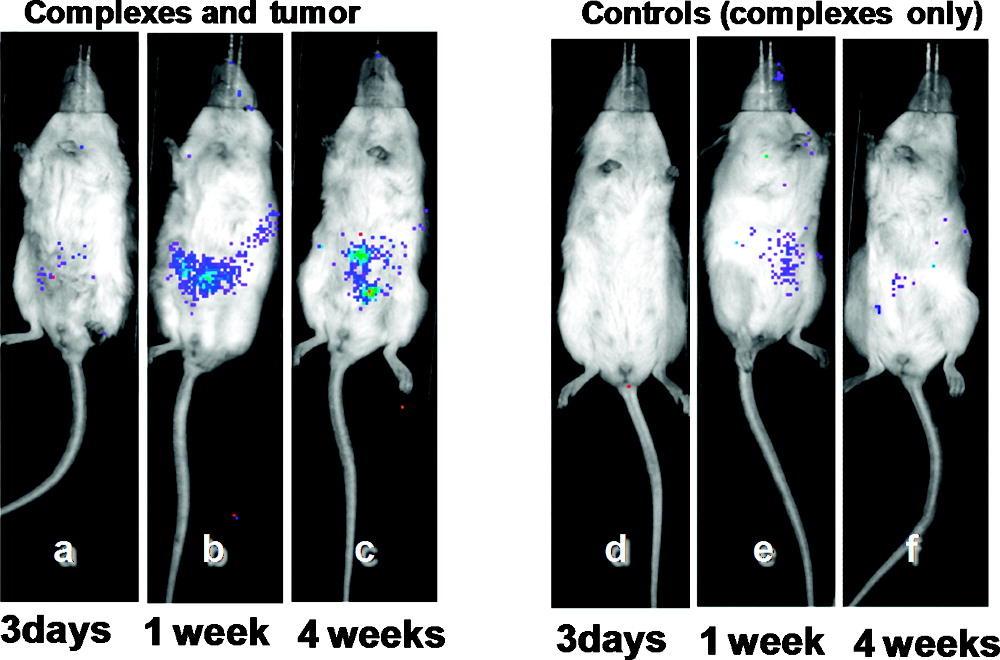Genetically engineered spider silk improve gene therapy
August 11, 2011

Human breast cancer cells growing in lab mice. The fluorescent signals indicate that a gene has successfully reached its target (credit: American Chemical Society)
Genetically engineered spider silk could help overcome a major barrier to the use of gene therapy in everyday medicine — the lack of safe and efficient carriers or “vectors,” Tufts University scientists have found.
The lack of good gene delivery systems is a main reason why there are no FDA-approved gene therapies, despite almost 1,500 clinical trials since 1989.
They modified spider silk proteins so that the proteins were able to attach to cancer cells, and they used mice containing human breast-cancer cells. The spider-silk proteins attached to the cancer cells and transported the DNA material into the cells — without harming the mice.
To provide a visual signal that the gene reached its intended target, they also engineered the spider silk to contain a gene that codes for the protein that makes fireflies glow.
The results suggest that the genetically engineered spider-silk proteins represent “a versatile and useful new platform polymer for nonviral gene delivery,” the researchers said.
Ref.: Keiji Numata, et al., Spider Silk-Based Gene Carriers for Tumor Cell-Specific Delivery, Bioconjugate Chemistry, 2011; : 110712095946020 [DOI: 10.1021/bc200170u]